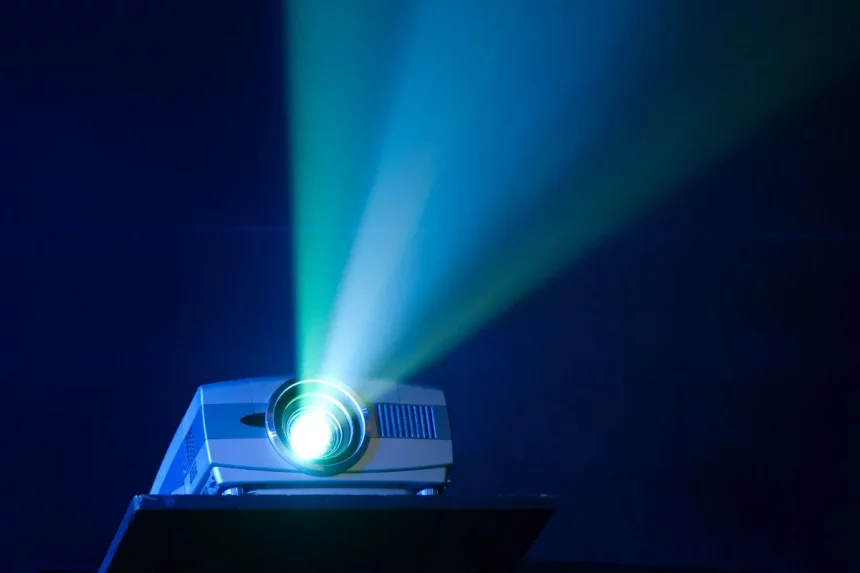Projectors are great for watching movies or streaming shows in your home theater. They also come in handy when you want to show presentations, visual aids, or educational videos in your classroom. Even if you can’t go all out and build a home cinema like the one seen in movie trailers, it doesn’t mean you can’t have fun with a projector and some friends. That said, buying a projector isn’t as simple as just picking any random unit from the shelves. You have to take several things into consideration such as resolution, brightness, lens type, throw distance and so on before making your final purchase decision. We have compiled a list of the best projectors for home use that will not only help you save time but also give you an idea of what each product has to offer before making your purchase decision.
What to Look for When Choosing the Best Home Projector
There are certain things to keep in mind before you make your purchase decision. These include:
Brightness – Brightness is one of the most important things you have to consider before making your purchase decision. Projectors that have higher lumen ratings can be used in larger rooms without any issues. So make sure you pick a model that has a brightness rating that is suitable for the room where you plan to use it.
Lens type – The lens type plays an important role in determining the brightness of the projector and the size of the image it can produce. Lens types can vary from short-throw, long-throw, and hybrid lenses. If you have a small room, a short-throw or hybrid lens can be ideal since it can create a large image at a short distance from the screen.
Image resolution – This is perhaps the most important thing to consider before making your purchase decision. Most projectors can display either Full HD (1920 x 1080) or WUXGA (1920 x 1200) resolution images. Make sure you pick a projector that can display images with the highest possible resolution.
1. DLP Projectors
DLP projectors use a small rotating color wheel to produce images. These projectors have high-quality lenses that can produce very sharp and vivid colors. They also have a relatively long lifespan and are energy efficient. DLP projectors can produce an image that has a large brightness range and a low input lag which makes them ideal for gaming. They are also very good for video and image quality. DLP projectors have been around for a long time and come at a cheap price. They also have comparatively lower brightness than LED projectors making them less suitable for large rooms. DLP projectors are best suited for small rooms such as classrooms or offices. They also come in short and long-throw variants. Short-throw DLP projectors are best suited for interactive displays while long-throw DLP projectors are ideal for large presentations. DLP projectors have a very high contrast ratio, excellent color reproduction, and a very low input lag. They have a short lifespan, however, making them less suitable for long-term use.
2. LED Projectors
LED projectors use a special LED light source to produce images. These projectors are more energy efficient than most other projectors and last longer. Compared to DLP projectors, LED projectors are brighter, produce images with more accurate colors, and have very less lag. LED projectors have a very high contrast ratio and come with a short throw distance. They are great for large rooms and are best suited for presentations, video conferences, and classrooms. LED projectors don’t have a very long lifespan, however, making them less suitable for long-term use. LED projectors are great for gaming because of their low input lag. They also come with HDR certification which makes them ideal for watching movies.
3. 3D-Ready Projectors
3D-ready projectors have an emitter and a lens that can shift horizontally and a shutter to create 3D images. The shutter, however, has to be closed when one wants to view the image in 2D. You need to make sure that the projector you choose is 3D-ready before making your purchase as not all projectors come with 3D capabilities. 3D-ready projectors can be used for gaming, watching movies, and presentations. They are best suited for large rooms and can create very large images but are not very suitable for offices or classrooms. 3D-ready projectors use a lot of power and can be expensive. Their input lag, however, is low which makes them great for gaming.
Conclusion
A projector is a great addition to any home theater setup or as an additional way to present content. There are many different types of projectors available, and each has different strengths and intended uses. When choosing a projector, it is important to take the intended uses, brightness, and space requirements into consideration to ensure you get a projector that will be both functional and enjoyable to use.














